Google Inc has overhauled its search algorithm, the foundation of the Internet’s dominant search engine, to better cope with the longer, more complex queries it has been getting from Web users.
Amit Singhal, senior vice president of search, told reporters on Thursday that the company launched its latest “Hummingbird” algorithm about a month ago and that it currently affects 90 percent of worldwide searches via Google.
Google is trying to keep pace with the evolution of Internet usage. As search queries get more complicated, traditional Boolean or keyword-based systems begin deteriorating because of the need to match concepts and meanings, in addition to words.
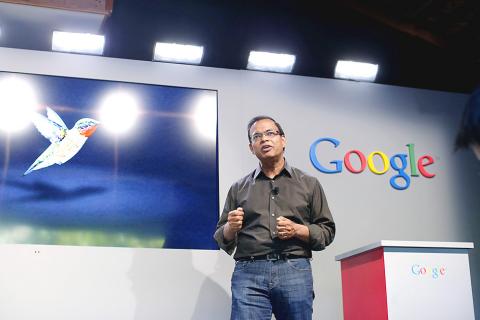
Photo: Reuters
“Hummingbird” is the company’s effort to match the meaning of queries with that of documents on the Internet, Singhal said from the Menlo Park garage where Google founders Larry Page and Sergey Brin conceived their now-ubiquitous search engine.
“Remember what it was like to search in 1998? You’d sit down and boot up your bulky computer, dial up on your squawky modem, type in some keywords, and get 10 blue links to Web sites that had those words,” Singhal wrote in a separate blogpost.
“The world has changed so much since then: Billions of people have come online, the Web has grown exponentially, and now you can ask any question on the powerful little device in your pocket,” he wrote.
Google celebrated its 15th birthday on Thursday with a trip down memory lane and an update to the search engine formula which helped spawn the tech giant.
The company took journalists on a tour of where it all started — Susan Wojcicki’s garage in Menlo Park, California, where Larry Page and Sergey Brin began working on Google in 1998. Wojcicki is currently a Google vice president.
A Google+ page included a photo album of the original home search page and collected dozens of birthday wishes.
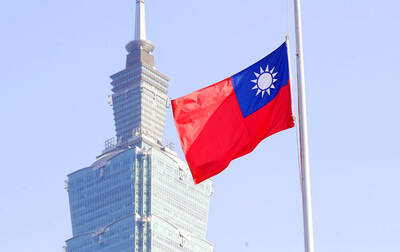
ELECTRONICS BOOST: A predicted surge in exports would likely be driven by ICT products, exports of which have soared 84.7 percent from a year earlier, DBS said DBS Bank Ltd (星展銀行) yesterday raised its GDP growth forecast for Taiwan this year to 4 percent from 3 percent, citing robust demand for artificial intelligence (AI)-related exports and accelerated shipment activity, which are expected to offset potential headwinds from US tariffs. “Our GDP growth forecast for 2025 is revised up to 4 percent from 3 percent to reflect front-loaded exports and strong AI demand,” Singapore-based DBS senior economist Ma Tieying (馬鐵英) said in an online briefing. Taiwan’s second-quarter performance beat expectations, with GDP growth likely surpassing 5 percent, driven by a 34.1 percent year-on-year increase in exports, Ma said, citing government
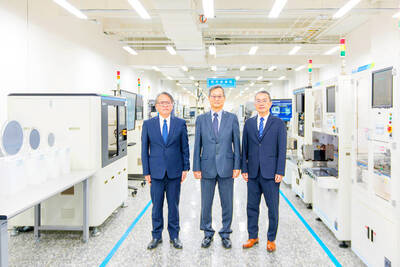
SMART MANUFACTURING: The company aims to have its production close to the market end, but attracting investment is still a challenge, the firm’s president said Delta Electronics Inc (台達電) yesterday said its long-term global production plan would stay unchanged amid geopolitical and tariff policy uncertainties, citing its diversified global deployment. With operations in Taiwan, Thailand, China, India, Europe and the US, Delta follows a “produce at the market end” strategy and bases its production on customer demand, with major site plans unchanged, Delta president Simon Chang (張訓海) said on the sidelines of a company event yesterday. Thailand would remain Delta’s second headquarters, as stated in its first-quarter earnings conference, with its plant there adopting a full smart manufacturing system, Chang said. Thailand is the firm’s second-largest overseas
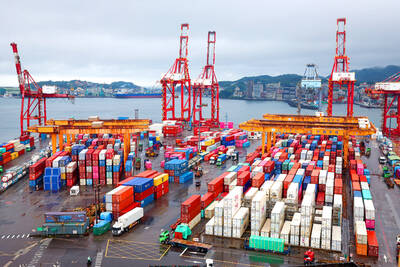
‘REMARKABLE SHOWING’: The economy likely grew 5 percent in the first half of the year, although it would likely taper off significantly, TIER economist Gordon Sun said The Taiwan Institute of Economic Research (TIER) yesterday raised Taiwan’s GDP growth forecast for this year to 3.02 percent, citing robust export-driven expansion in the first half that is likely to give way to a notable slowdown later in the year as the front-loading of global shipments fades. The revised projection marks an upward adjustment of 0.11 percentage points from April’s estimate, driven by a surge in exports and corporate inventory buildup ahead of possible US tariff hikes, TIER economist Gordon Sun (孫明德) told a news conference in Taipei. Taiwan’s economy likely grew more than 5 percent in the first six months
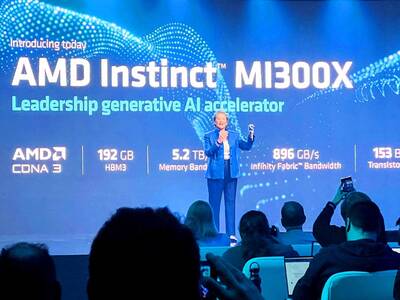
SUPPLY RESILIENCE: The extra expense would be worth it, as the US firm is diversifying chip sourcing to avert disruptions similar to the one during the pandemic, the CEO said Advanced Micro Devices Inc (AMD) chief executive officer Lisa Su (蘇姿丰) on Wednesday said that the chips her company gets from supplier Taiwan Semiconductor Manufacturing Co (TSMC, 台積電) would cost more when they are produced in TSMC’s Arizona facilities. Compared with similar parts from factories in Taiwan, the US chips would be “more than 5 percent, but less than 20 percent” in terms of higher costs, she said at an artificial intelligence (AI) event in Washington. AMD expects its first chips from TSMC’s Arizona facilities by the end of the year, Su said. The extra expense is worth it, because the company is